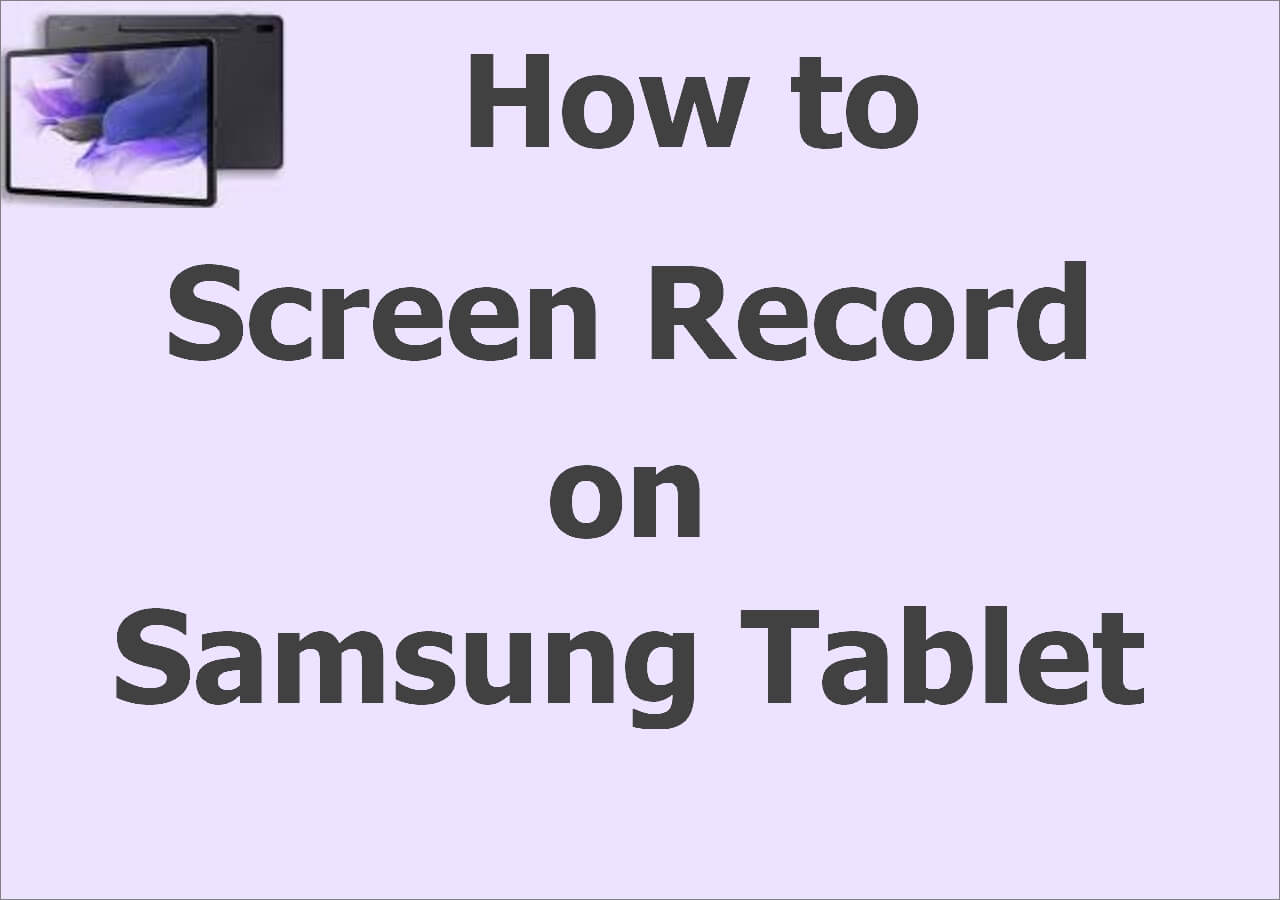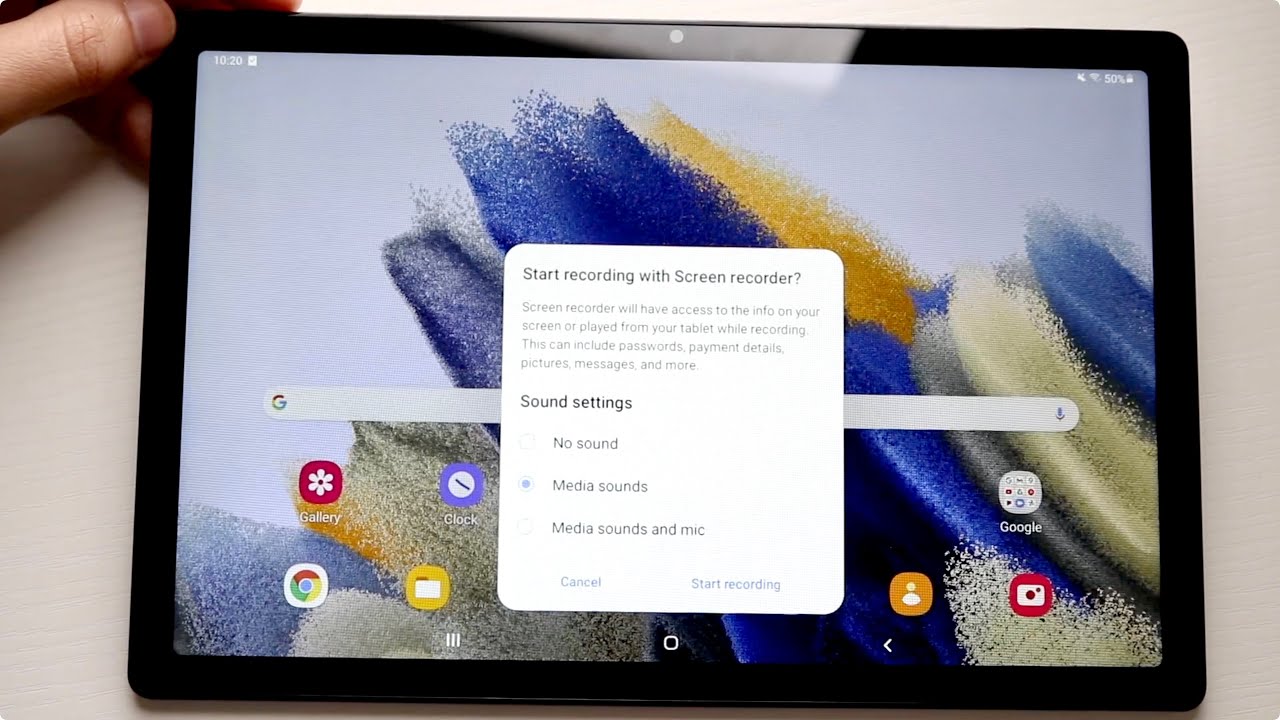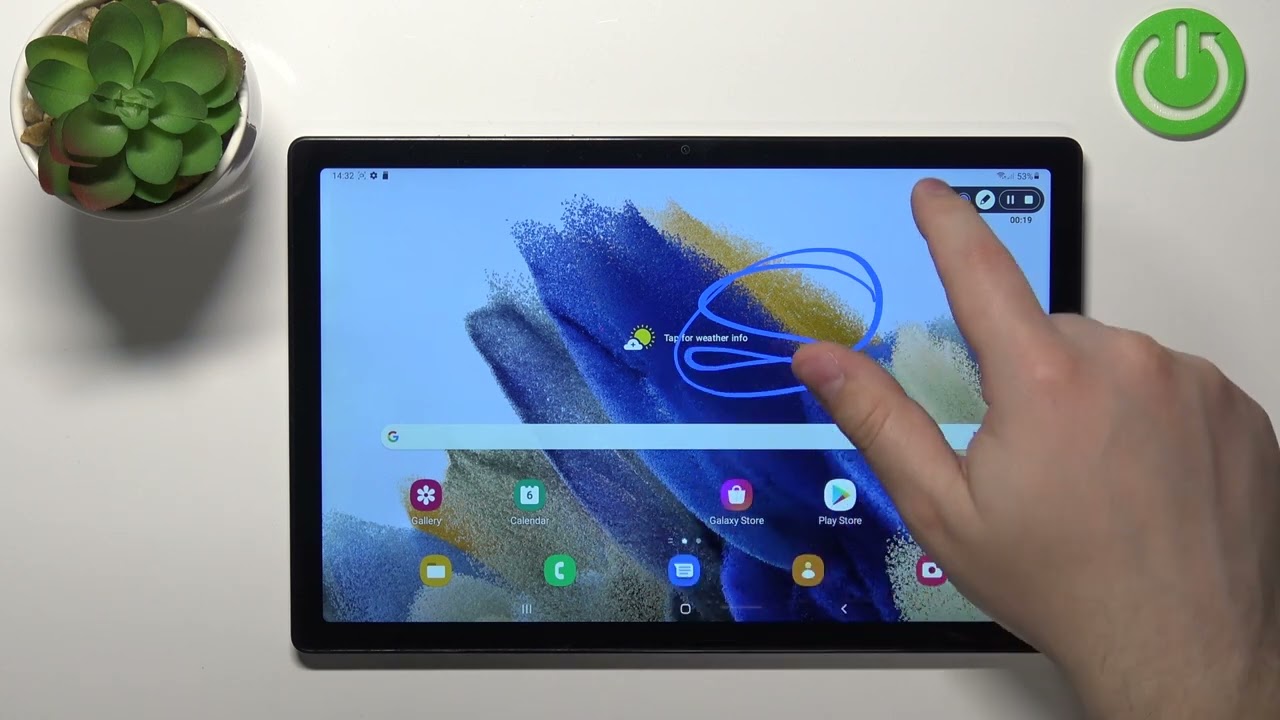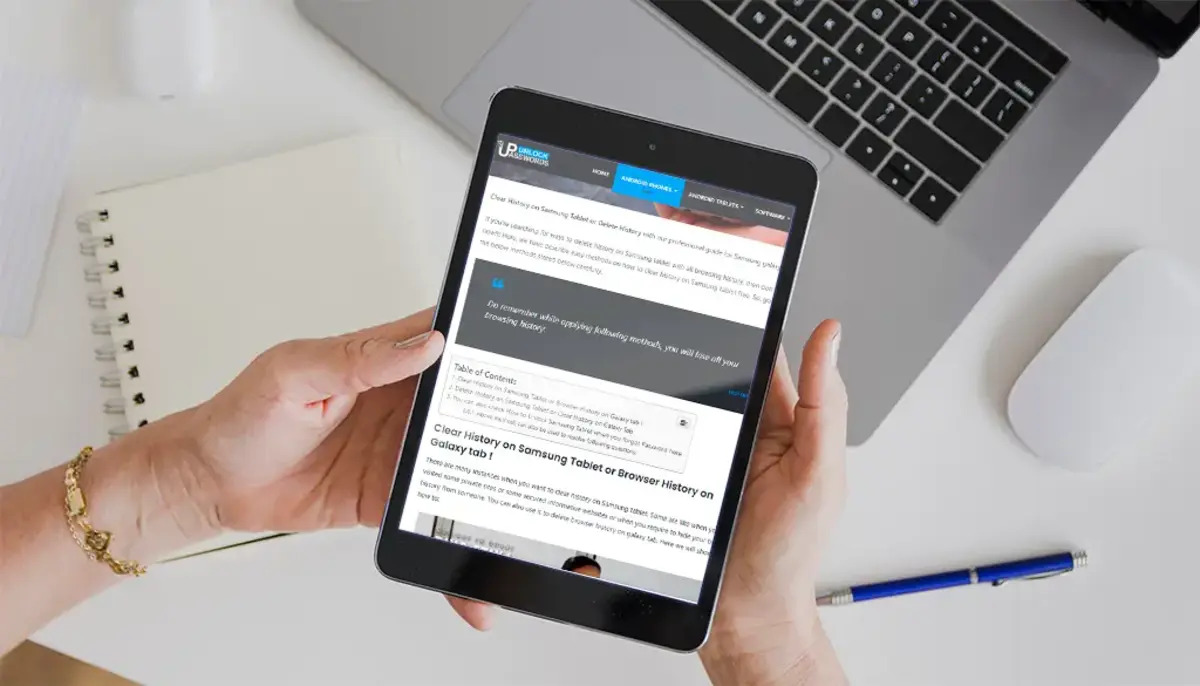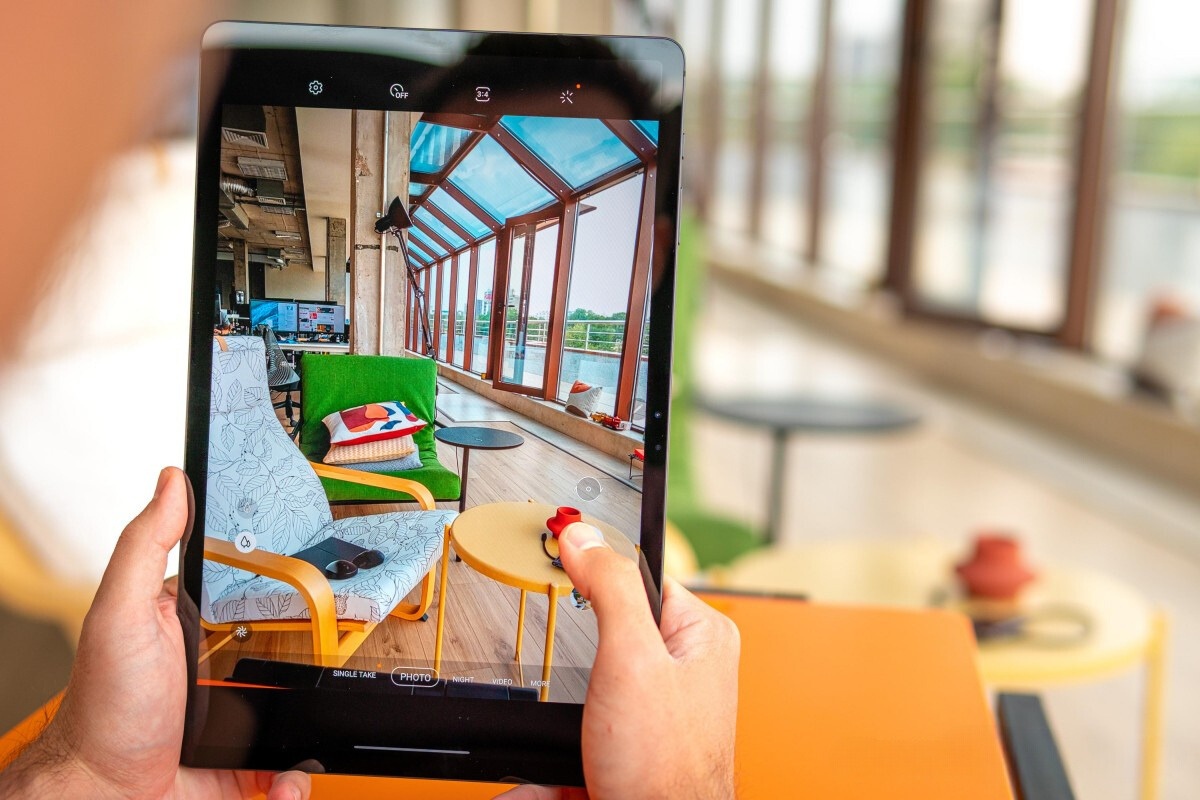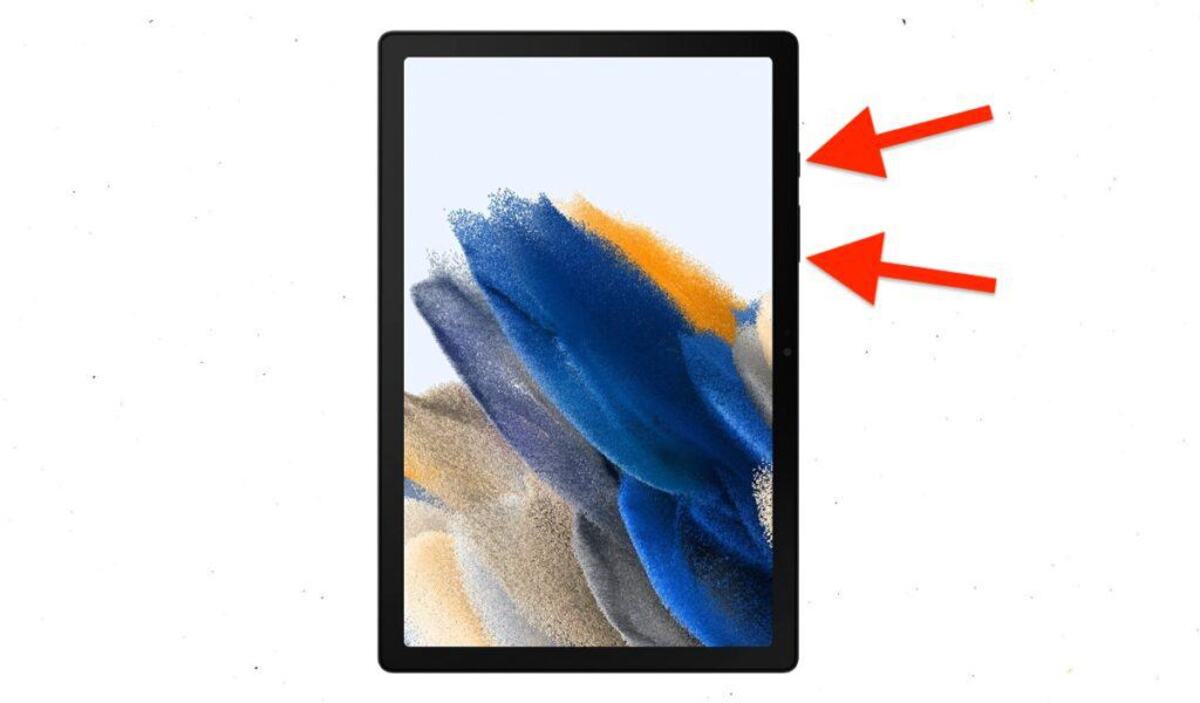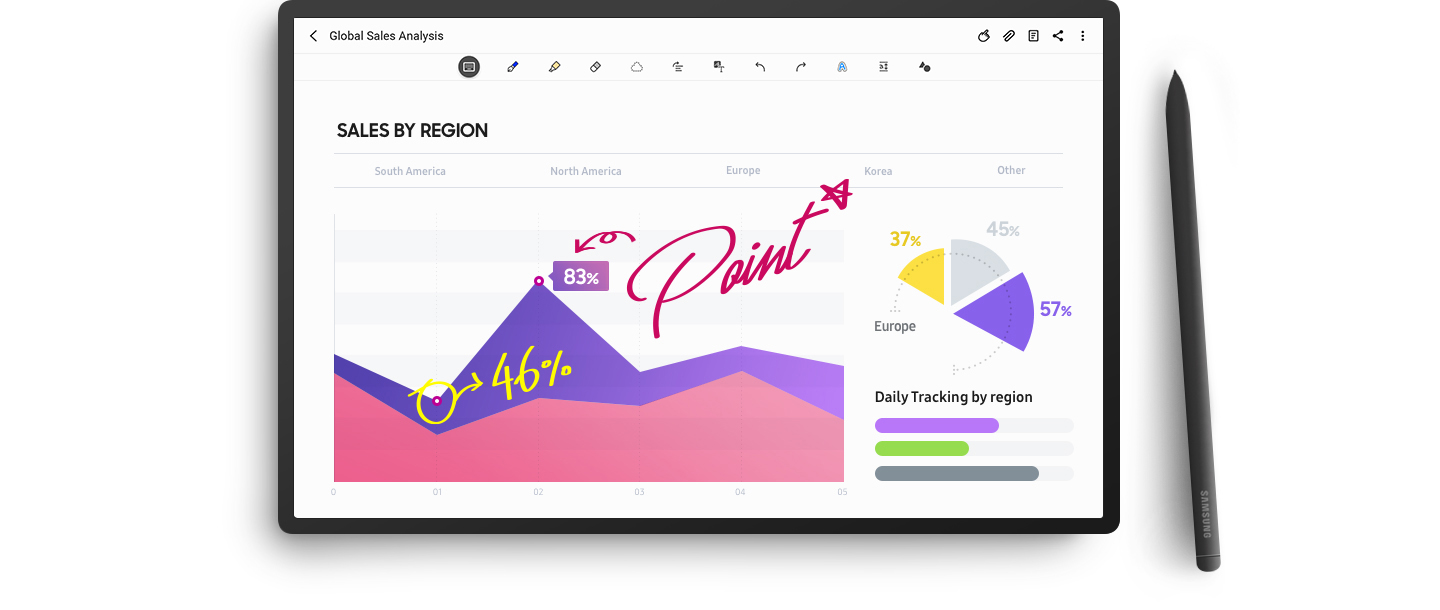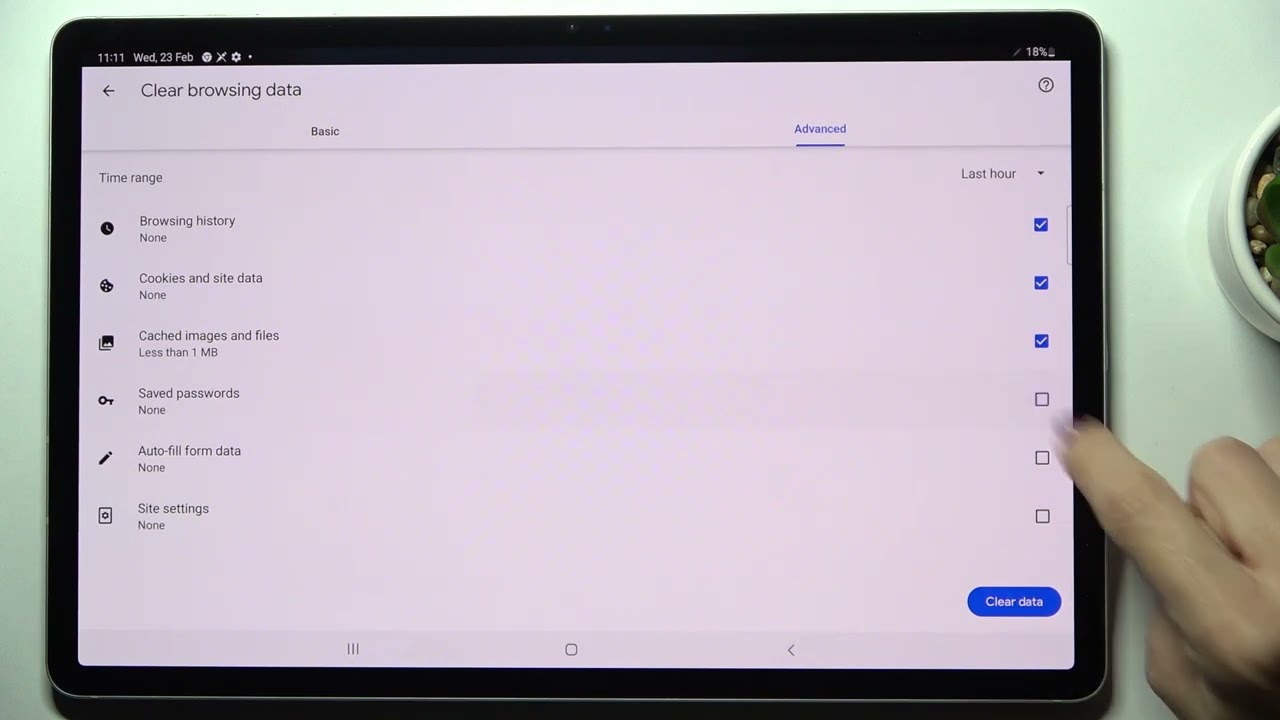Introduction
Screen recording has become an essential feature for many tablet users, especially those who need to record tutorials, gameplay, or any other activity on their Samsung tablets. With the ability to capture everything happening on your tablet’s screen, screen recording can be incredibly useful.
Whether you want to create instructional videos, share your gaming achievements, or simply record an important moment, knowing how to screen record on your Samsung tablet is a valuable skill. In this article, we will explore different methods to screen record on a Samsung tablet, so you can choose the one that suits your needs.
In this guide, we will discuss three different methods for screen recording on a Samsung tablet. The first method involves using the built-in screen recorder app, which is available on most Samsung tablets. The second method involves using third-party screen recording apps, which offer more advanced features. Finally, we will explore using a computer as an alternative way to screen record your Samsung tablet.
By the end of this article, you will have a clear understanding of how to screen record on your Samsung tablet and be able to choose the method that best fits your requirements.
Overview of Screen Recording on Samsung Tablet
Before diving into the specific methods of screen recording on a Samsung tablet, let’s take a moment to understand the basics of screen recording and its benefits.
Screen recording is the process of capturing everything that is displayed on your tablet’s screen and saving it as a video file. This can be incredibly helpful in various scenarios. For instance, if you want to make a tutorial video to guide others on how to use certain features or apps on your tablet, screen recording allows you to demonstrate each step visually. It also comes in handy if you want to showcase your gaming skills or record important moments during a video call.
Samsung tablets offer different ways to enable screen recording, depending on the model and operating system version. Some newer Samsung tablets have a built-in screen recorder app that simplifies the process, while older models may require the use of third-party apps or external devices.
One of the key benefits of screen recording on a Samsung tablet is the ability to capture high-quality videos with smooth and fluid playback. This is especially important when recording gameplay or any fast-paced activities where every frame counts.
Another advantage of screen recording on Samsung tablets is the flexibility to record not only the entire screen but also specific sections or apps. This allows you to focus on the desired content and exclude any personal or sensitive information that you don’t want to share.
Additionally, most screen recording methods on Samsung tablets provide options to customize the recording settings. You can adjust the video resolution, frame rate, and audio source to achieve the desired output quality and file size.
Now that you have a better understanding of screen recording and its benefits, let’s explore the different methods you can use to screen record on your Samsung tablet.
Method 1: Using the Built-in Screen Recorder App
Many Samsung tablets come equipped with a built-in screen recorder app that simplifies the screen recording process. This method is straightforward and doesn’t require any additional downloads or installations.
To access the built-in screen recorder app on your Samsung tablet, follow these steps:
- Ensure that you are on the home screen of your tablet.
- Swipe down from the top of the screen to open the notification panel.
- Look for the “Screen Recorder” option among the quick settings icons.
- If you don’t see the “Screen Recorder” option, swipe left or right to find it.
- Tap on the “Screen Recorder” icon to open the screen recording app.
Once you have launched the screen recorder app, you will see various tools and settings to customize your recording. You can select whether to record audio from the microphone, enable touch interactions to be visible in the recording, and choose the video resolution and quality.
When you’re ready to start recording, simply tap the “Record” button. The app will display a countdown, and then your tablet’s screen will be recorded. You can navigate through different apps, menus, or perform any action on your tablet while the recording is in progress.
To stop the recording, you can either tap the “Stop” button on the screen recorder app or open the notification panel and tap the “Stop” button there. The recorded video will be saved in your tablet’s gallery or the designated location for screen recordings.
The built-in screen recorder app on Samsung tablets offers a convenient and hassle-free way to capture your screen. However, keep in mind that the availability of this app may vary depending on the model and operating system version of your tablet.
Now that you’re familiar with the first method of using the built-in screen recorder app, let’s move on to exploring other options for screen recording on your Samsung tablet.
Method 2: Using Third-Party Screen Recording Apps
If your Samsung tablet doesn’t have a built-in screen recorder app or if you’re looking for more advanced features, you can turn to third-party screen recording apps. These apps offer additional functionalities and customization options to enhance your screen recording experience.
There are numerous third-party screen recording apps available on the Google Play Store that are compatible with Samsung tablets. Some popular options include AZ Screen Recorder, Mobizen Screen Recorder, and DU Recorder.
To use a third-party screen recording app on your Samsung tablet, follow these steps:
- Open the Google Play Store app on your tablet.
- Search for the desired screen recording app using the search bar.
- Select the app from the search results and click on “Install” to download and install it on your tablet.
- Once the installation is complete, launch the screen recording app.
- Depending on the app, you may be prompted to grant certain permissions, such as accessing the microphone or overlaying on top of other apps. Follow the on-screen instructions to proceed.
- Once you’re in the app, you’ll find a wide range of settings and features to customize your recording. You can adjust video resolution, frame rate, and enable or disable audio recording.
When you’re ready to start recording, tap the “Record” button within the app. The recording will begin, and you can freely navigate your tablet’s screen and perform any actions you want to capture.
To stop the recording, return to the screen recording app and tap the “Stop” or “Finish” button. The app will save your recording in a designated location, which you can access from within the app or through your tablet’s file manager.
Using third-party screen recording apps gives you the flexibility to customize your recording settings and access additional features like video editing, trimming, and sharing options. It’s worth exploring these apps to find one that best suits your needs.
Now that we’ve covered the second method of using third-party screen recording apps, let’s move on to our final method: using a computer to screen record your Samsung tablet.
Method 3: Using a Computer to Screen Record
If you prefer a more comprehensive screen recording experience or want to utilize the resources of your computer, you can use it to screen record your Samsung tablet. This method allows for more flexibility in terms of editing, sharing, and storing your recordings.
To screen record your Samsung tablet using a computer, follow these steps:
- Ensure that your Samsung tablet is connected to your computer via a USB cable.
- On your tablet, swipe down from the top of the screen to access the notification panel.
- Tap on the “USB connection” notification and select the option to transfer files or enable file transfer.
- On your computer, open a web browser and search for screen recording software or screen mirroring software compatible with Samsung tablets. Some popular options include OBS Studio, Apowersoft Screen Recorder, and Vysor.
- Download and install the chosen screen recording software on your computer.
- Launch the screen recording software and follow the on-screen instructions to connect your Samsung tablet to the computer.
- Once the connection is established, you’ll see your tablet’s screen mirrored on your computer. You can now use the screen recording software to start recording.
Within the screen recording software, you’ll have access to various settings and options to customize your recording. You can select the desired video resolution, frame rate, audio source, and specify the output destination for your recordings.
When everything is set up, click on the “Record” button in the screen recording software to start capturing your Samsung tablet’s screen. You can navigate through different apps, menus, or perform any actions you want to record.
To stop the recording, return to the screen recording software and click on the “Stop” or “Finish” button. The software will save your recording to the specified location on your computer.
Using a computer for screen recording provides you with more options for editing, storing, and sharing your recordings. Additionally, it allows you to utilize the processing power and resources of your computer for a smoother recording experience.
Now that we’ve explored the third method of screen recording using a computer, let’s move on to some helpful tips and tricks to enhance your screen recording on a Samsung tablet.
Tips and Tricks for Screen Recording on Samsung Tablet
To make the most out of your screen recording sessions on your Samsung tablet, consider the following tips and tricks:
- Plan and organize: Before you start recording, plan out what you want to showcase or explain in your video. Organize your content in a logical order to ensure a smooth recording process.
- Clean up your tablet: Clear any unnecessary notifications or clutter on your tablet’s screen to create a clean and distraction-free recording environment.
- Optimize your tablet’s performance: Close any background apps or processes that may interfere with your screen recording. This will help ensure a smoother recording without any lag or interruptions.
- Use a tripod or stable surface: If you’re recording something that requires steady hands, consider using a tripod or placing your tablet on a stable surface to avoid shakiness in your recording.
- Highlight important actions: When demonstrating a process or navigating through an app, be mindful of highlighting important actions or buttons on your tablet’s screen to make it easier for viewers to follow along.
- Utilize gestures and touch gestures: Gesture controls can be useful for highlighting specific features or interactions. Take advantage of these gestures to enhance your screen recording.
- Record in landscape mode: To ensure optimal viewing experience, record your screen in landscape mode. This is particularly important when recording games or apps that are designed for landscape orientation.
- Consider multiple takes: If you make a mistake during the recording, don’t hesitate to stop and start a new recording. It’s better to have multiple takes and edit later, rather than delivering a subpar recording.
- Review your recording: Before sharing or finalizing your screen recording, review it to ensure everything is captured as intended. Trim any unwanted footage and make necessary edits if needed.
- Experiment with editing: Once you have your screen recording, don’t be afraid to experiment with basic editing techniques. Add captions, annotations, or background music to enhance the visual appeal of your video.
These tips and tricks will help you create professional and engaging screen recordings on your Samsung tablet. Experiment with different methods, explore advanced features, and most importantly, have fun while recording.
Now that we’ve covered some helpful tips and tricks, it’s time to wrap up our guide on screen recording on a Samsung tablet.
Conclusion
Screen recording on a Samsung tablet can be incredibly useful for various purposes, from creating tutorials to sharing gameplay moments. In this article, we explored different methods for screen recording on a Samsung tablet.
We began by discussing the built-in screen recorder app available on many Samsung tablets. This app offers a convenient and straightforward way to capture your screen without the need for any additional downloads. However, availability may vary depending on the tablet model.
We then looked at using third-party screen recording apps, which provide more advanced features and customization options. These apps offer a wide range of functionalities and are ideal for users who require more control over their screen recording sessions.
Lastly, we explored using a computer to screen record your Samsung tablet. This method provides a comprehensive screen recording experience and allows for easier editing and sharing of your recordings.
Throughout the article, we also provided valuable tips and tricks to help you enhance your screen recording sessions, such as planning your content, optimizing your tablet’s performance, and considering multiple takes for better results.
Now that you are equipped with these methods and tips, you can confidently screen record on your Samsung tablet and create engaging and informative videos. So whether you’re a content creator, educator, or just someone who wants to share their tablet experiences, go ahead and start screen recording on your Samsung tablet.
Remember to explore different methods, experiment with settings and features, and have fun while recording. Happy screen recording!







